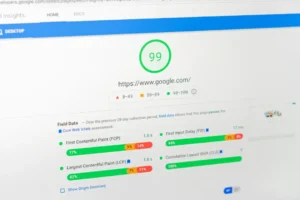
Introduction to Digital Marketing Integration
In today’s rapidly evolving digital landscape, the concept of integrating various digital marketing channels has gained significant importance. This integration is essential for crafting a cohesive brand message that resonates with consumers across multiple platforms. Brands can achieve a more unified presence by effectively combining channels such as social media, email marketing, and search engine marketing, ultimately leading to enhanced customer experiences and improved overall engagement.
Digital marketing encompasses a wide range of channels, each serving a unique purpose in reaching potential customers. Social media platforms, for instance, provide an opportunity to engage directly with consumers, fostering community and allowing for real-time interaction. Email marketing, on the other hand, offers a more personalized approach, enabling brands to nurture leads and maintain ongoing relationships with their audience. Search engine marketing complements these efforts by increasing visibility, driving traffic to websites, and ensuring that targeted content is easily accessible to users seeking specific information.
When these digital marketing channels are harmonized through integrated marketing strategies, the results can be remarkable. A seamless experience across various platforms not only enhances customer satisfaction but also reinforces brand identity. Consistency in messaging allows customers to connect with the brand more meaningfully, potentially leading to increased loyalty and conversion rates. The synergy created through cross-channel marketing can amplify the effectiveness of each individual channel, making them collectively more powerful than when operated in silos.
As businesses navigate the complexities of digital marketing, recognizing the value of integrating these diverse channels is crucial. By adopting an integrated approach, brands can effectively cater to their audience’s preferences, ensuring a recognizable and unified brand message is conveyed at every touchpoint. This strategic alignment is not merely a trend but a fundamental aspect of successful digital marketing in the contemporary marketplace.
Understanding Digital Marketing Channels
Digital marketing encompasses a myriad of channels that enable businesses to reach and engage their target audiences effectively. Each channel plays a distinct role in the overall marketing strategy, contributing to the holistic approach of cross-channel marketing. Among the most pivotal digital marketing channels are social media, email marketing, and search engine marketing, each with its unique characteristics and methods for audience engagement.
Social media platforms, such as Facebook, Twitter, and Instagram, serve as interactive spaces where brands can connect with their audiences in real time. By leveraging the unique features of each platform, businesses can create tailored content that resonates with diverse demographic segments. The dynamic nature of social media allows for immediate feedback and engagement, facilitating community building and brand loyalty through integrated marketing strategies. Companies can employ various tactics, including social media advertising, influencer partnerships, and user-generated content campaigns to enhance their outreach.
Email marketing remains one of the most effective channels for direct communication with customers. This channel allows businesses to send personalized messages to their audience, fostering a deeper connection. By segmenting their email lists based on user behavior and preferences, marketers can deliver tailored content that addresses specific needs and interests. Furthermore, email marketing is instrumental in nurturing leads through informative newsletters, promotional offers, and drip campaigns, solidifying relationships over time. Strategies such as A/B testing and automation can enhance the effectiveness of email campaigns, ensuring that brands maintain relevance and engagement.
Lastly, search engine marketing (SEM) offers a strategic approach to increasing visibility on search platforms like Google. This channel encompasses both paid advertising (PPC) and search engine optimization (SEO). By targeting relevant keywords and optimizing website content, brands can improve their search rankings, ultimately driving organic traffic. SEM enables marketers to reach potential customers actively seeking products or services, thus facilitating a more immediate connection. Effective use of SEM within a cross-channel marketing framework can optimize overall visibility, driving traffic in a cohesive manner across all digital platforms.
The Importance of a Cohesive Brand Message
A cohesive brand message is essential for any business seeking to thrive in today’s competitive market. With the advent of digital communication, brands now have the opportunity to engage with their audience across various platforms. However, this vast array of channels also creates a challenge: ensuring that the brand message remains uniform and effective across each one. This is where the concept of cross-channel marketing comes into play, underscoring the need for integrated marketing strategies that align messaging across diverse touchpoints.
Maintaining consistency in brand messaging builds recognition. When customers encounter uniform messaging, whether through social media, email newsletters, or websites, it reinforces their understanding of what the brand stands for. This recognition can enhance recall, making it easier for consumers to remember the brand when making purchasing decisions. Moreover, a cohesive brand message fosters trust. When customers see the same tone, style, and message across channels, it signals reliability and professionalism, which are crucial for establishing a trustworthy relationship with the audience.
Additionally, a unified message cultivates customer loyalty. Customers gravitate toward brands that resonate with them on multiple levels. When a brand communicates consistently, customers feel more connected and are more likely to make repeat purchases. In contrast, when there is misalignment in messaging between channels, it can lead to confusion and disengagement. For example, if a brand’s social media posts communicate a friendly and casual tone, while its email newsletters adopt a formal tone, customers may become perplexed about the brand’s identity. This inconsistency can diminish trust and undermine the relationship with the audience.
In conclusion, a cohesive brand message is vital for successful cross-channel marketing efforts. By employing integrated marketing strategies that emphasize consistency, brands can not only enhance recognition and trust but also foster deeper connections with their customers, ultimately driving better business outcomes.
Creating a Unified Marketing Strategy
Developing a comprehensive marketing strategy that integrates various digital channels is essential for any brand seeking to create a cohesive message in today’s multi-faceted landscape. A unified approach not only strengthens brand identity but also enhances customer experience by ensuring that individuals receive consistent messaging across platforms. To achieve this, the first step is to align your marketing goals across all channels. Each platform, whether it be social media, email, or search engines, should support the overarching objectives of your organization.
Next, identifying your target audience is critical. Understanding who your audience is and what platforms they frequent will enable you to tailor your messages more effectively. For example, while social media channels may require a more casual tone, email communications might need to be more formal, depending on the audience segment. By having a clear profile of your audience, you can harmonize your content so that it resonates across different touchpoints without compromising your brand’s voice.
Moreover, implementing integrated marketing strategies across channels ensures that all communications are not only consistent but also synchronized. Planning digital campaigns that involve multiple platforms allows for a more comprehensive reach. For instance, a campaign could utilize social media advertising to generate leads, followed by targeted email marketing to nurture those leads, reinforcing the message delivered through paid ads. Utilizing analytics tools across various channels will allow you to monitor the effectiveness of your campaigns and adjust your strategies accordingly.
Ultimately, a well-crafted and united cross-channel marketing strategy will not just improve brand visibility but will foster deeper connections with your audience, driving retention and loyalty through a principal understanding of their needs and preferences.
Leveraging Social Media for Brand Cohesion
Social media plays a pivotal role in establishing a cohesive brand presence across various platforms. By leveraging these channels effectively, brands can enhance their visibility, deepen customer engagement, and create a unified message that resonates with their target audience. To achieve this, brands should focus on crafting a well-defined content strategy that is in line with their core values and messaging. This strategy should encompass content creation, audience interaction, and thoughtful cross-promotion of other marketing channels.
In the realm of content creation, it is crucial to maintain consistency in visual elements such as color palettes, typography, and logos across all social media profiles. This ensures that customers identify the brand easily, regardless of the channel they are interacting with. Additionally, engaging storytelling can enhance a brand’s personality and strengthen emotional connections with followers. By sharing customer testimonials, behind-the-scenes looks, and user-generated content, brands can foster a community that feels invested in their journey.
Engagement is another essential aspect of utilizing social media for brand cohesion. Brands can achieve higher interaction rates by encouraging conversations with their audience through comments, polls, and live sessions. It is vital to respond promptly to inquiries and feedback, demonstrating that the brand values its customers’ opinions. This two-way communication not only enhances brand loyalty but also provides valuable insights that can inform broader integrated marketing strategies.
Cross-promotion of other marketing channels is equally significant. Brands should share content from their blogs, email newsletters, or websites on their social media profiles, creating an interconnected digital footprint. This cross-channel marketing approach amplifies the reach of individual pieces of content and reinforces the brand’s message across various platforms. Adapting messaging to reflect the nuances of each social media channel while remaining true to the core brand identity is essential for achieving a seamless experience for the audience.
Email Marketing as a Channel for Consistent Messaging
Email marketing serves as a crucial conduit for delivering a cohesive brand message, particularly in the context of integrated marketing strategies. As a direct communication channel, it allows businesses to create meaningful connections with their audience, ensuring that the brand’s identity is conveyed uniformly across all digital platforms. To achieve this, businesses must employ best practices that foster brand consistency while also enhancing overall customer experience.
One of the primary considerations in designing effective email campaigns is to align the content with the brand’s voice and personality. This means the language, tone, and visual elements such as colors and fonts must reflect the overall branding strategy. By preserving these elements, businesses can reinforce their identity in the minds of consumers, ultimately enhancing customer loyalty and promoting engagement. Moreover, it is vital that email content is relevant, offering value to recipients through informative articles, promotional offers, or updates that resonate with their interests.
Furthermore, email marketing should not exist in isolation but rather should actively support and complement other digital marketing channels, such as social media and search engine marketing. Creating a cohesive customer experience requires a strategic approach where campaigns are interlinked; for instance, including social sharing buttons in emails can drive traffic to social platforms while promoting a consistent message across all channels. Similarly, utilizing techniques such as retargeting ads based on email interactions can create a seamless journey for customers and amplify the impact of cross-channel marketing efforts.
In summary, email marketing can be a powerful tool in achieving brand cohesion when executed effectively. By ensuring that each campaign aligns with the overall brand identity and supports other marketing channels, businesses can strengthen their messaging and optimize their reach through integrated marketing strategies.
Optimizing Search Engine Marketing for Cohesion
Search Engine Marketing (SEM) plays an integral role in reinforcing cohesive branding strategies across various platforms. By systematically utilizing SEM, businesses can create a consistent and recognizable brand presence that complements their integrated marketing strategies. One of the key components of effective SEM is keyword consistency. Selecting the right keywords that resonate with both search intent and the brand message ensures that advertisements are aligned with other marketing channels. This alignment not only enhances visibility but also fosters a recognizably unified narrative that potential customers encounter throughout their journey.
An important aspect of keyword consistency is the harmonization of ad copy. Utilizing concise and coherent messaging in SEM ad campaigns helps ensure that the unique selling propositions are clearly communicated. When potential customers click on an ad, they should find a seamless transition from the ad copy to the landing page, which echoes the same tone, language, and visual elements as the brand’s messaging on social media and within email communications. This creates an assurance of the brand’s reliability and authenticity, as all marketing efforts collectively support and promote a singular brand identity.
Incorporating SEM with other digital marketing channels is essential for creating a holistic cross-channel marketing approach. For instance, when advertisements not only lead to a landing page that reinforces the brand message from social media posts but also integrates calls to action seen in email campaigns, it leads to a more satisfying user experience. When consumers engage with multiple channels, the connections developed across SEM, social media, and email serve to create a comprehensive understanding of the brand’s offerings. Consequently, this cohesive strategy holds the potential for enhanced brand loyalty and improved consumer engagement.
Measuring the Effectiveness of Integrated Marketing Efforts
To evaluate the success of integrated marketing strategies, it is imperative to establish clear Key Performance Indicators (KPIs) that align with overarching business objectives. KPIs allow marketers to quantify the effectiveness of their cross-channel marketing campaigns, ultimately ensuring that a cohesive brand message resonates with the target audience. Commonly utilized KPIs include engagement rates, conversion rates, reach, and customer retention metrics.
Engagement rates serve as a crucial benchmark for assessing how audiences are responding to marketing initiatives across various digital channels. Tools such as Google Analytics or social media analytics platforms help in tracking these metrics, providing insights into user interactions, such as likes, shares, comments, and time spent on content. A higher engagement rate often indicates that the message delivered through integrated marketing channels is effectively capturing attention and fostering interest.
Conversion rates are another vital KPI that measures the percentage of users who take a desired action, such as making a purchase or signing up for a newsletter. Effective cross-channel marketing efforts should demonstrate a higher conversion rate, suggesting that the integration of messaging and branding across platforms is compelling enough to drive actions. Regularly analyzing these rates allows marketers to identify which channels are most effective in converting leads to customers.
Furthermore, employing advanced analytics tools can provide deeper insights into customer behavior and preferences, facilitating the refinement of integrated digital marketing strategies. Software solutions such as HubSpot or SEMrush can track customer journeys across multiple channels, helping businesses understand how different touchpoints influence decision-making. By monitoring these analytics, marketers can adjust their campaigns accordingly and optimize the overall effectiveness of their integrated marketing efforts.
In conclusion, measuring the effectiveness of integrated marketing efforts involves a thorough examination of KPIs and utilizing robust analytics tools. By focusing on engagement and conversion metrics, businesses can create data-driven strategies that enhance their cross-channel marketing initiatives and maintain a consistent brand message.
Case Studies and Real-World Examples
Examining successful instances of cross-channel marketing can provide valuable insights for brands looking to implement integrated marketing strategies. A noteworthy example is Coca-Cola’s “Share a Coke” campaign, which effectively utilized various digital channels such as social media, mobile applications, and traditional marketing. By inviting consumers to find personalized Coke bottles, they engaged customers in a unique way. The campaign not only boosted sales but also enhanced customer interaction and brand loyalty, showcasing how a cohesive messaging strategy can yield significant results.
Another compelling instance is Nike’s use of digital platforms to create a seamless shopping experience. Through the integration of their website, social media, and mobile applications, Nike crafted an engaging online environment that caters to its audience’s preferences. Their “Nike By You” program allows customers to customize products while sharing their unique creations on social media. This strategy not only encourages consumer creativity but also fosters community building around the brand, illustrating the effectiveness of a harmonious approach to cross-channel marketing.
Moreover, Airbnb exemplifies the successful integration of digital marketing channels through their use of storytelling. By leveraging a mix of social media posts, blogs, and user-generated content, Airbnb emphasizes personal travel experiences and local culture. Their cohesive branding efforts highlight unique stays and experiences, making it easy for potential customers to connect emotionally with their offerings. The measurable outcomes of this strategy are evident in the increased user engagement and sustained growth in bookings.
These case studies demonstrate that integrated marketing strategies grounded in cross-channel marketing can lead to remarkable brand recognition, improved customer connection, and measurable success. Each brand’s unique approach serves as inspiration for organizations seeking to refine their own marketing plans while ensuring a consistent brand message across channels.








